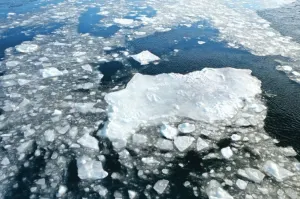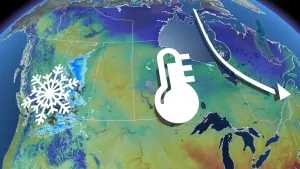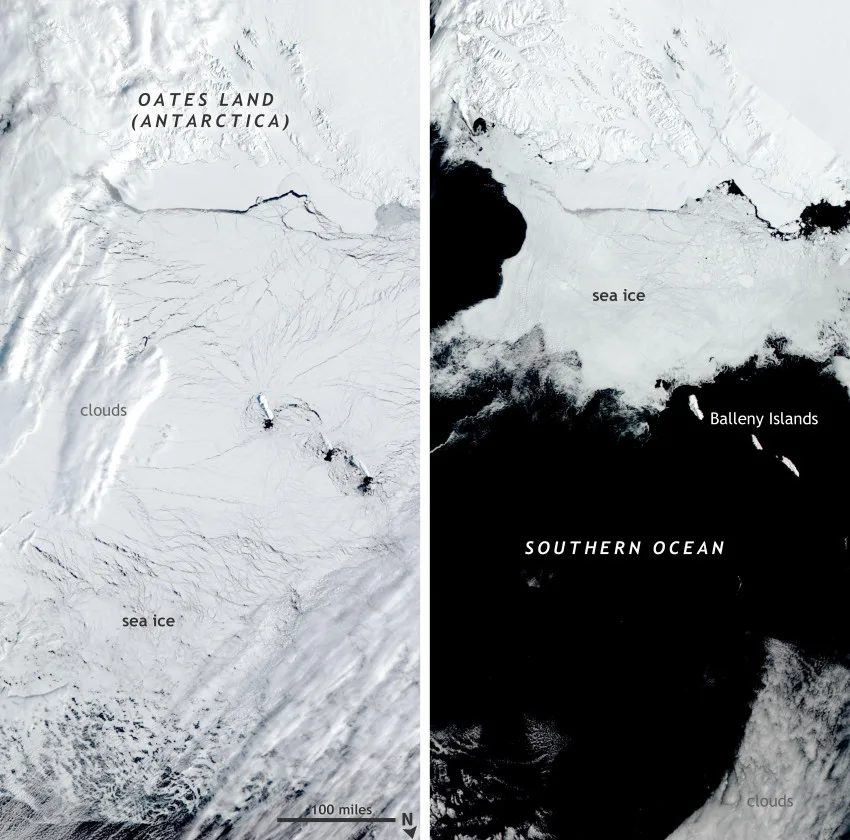
Glacier geoengineering proposed to mitigate sea level rise
Geoengineering methods are being considered as possible solutions for environments that are being impacted by climate change.
Sea level rise is high on the list of problems that humanity needs to tackle due to climate change. Approximately 40 per cent of the world’s population lives along coastlines and millions will be impacted by rising sea levels due to rapid ice melt in polar regions.
Greenhouse gas emissions are behind much of the warming that is accelerating ice melt around the planet. Beyond global efforts, such as the 2016 Paris Agreement, that aim to reduce the rate at which gases like carbon dioxide or methane are injected into the atmosphere, scientists are now searching for alternate methods to reduce global warming in the near future.
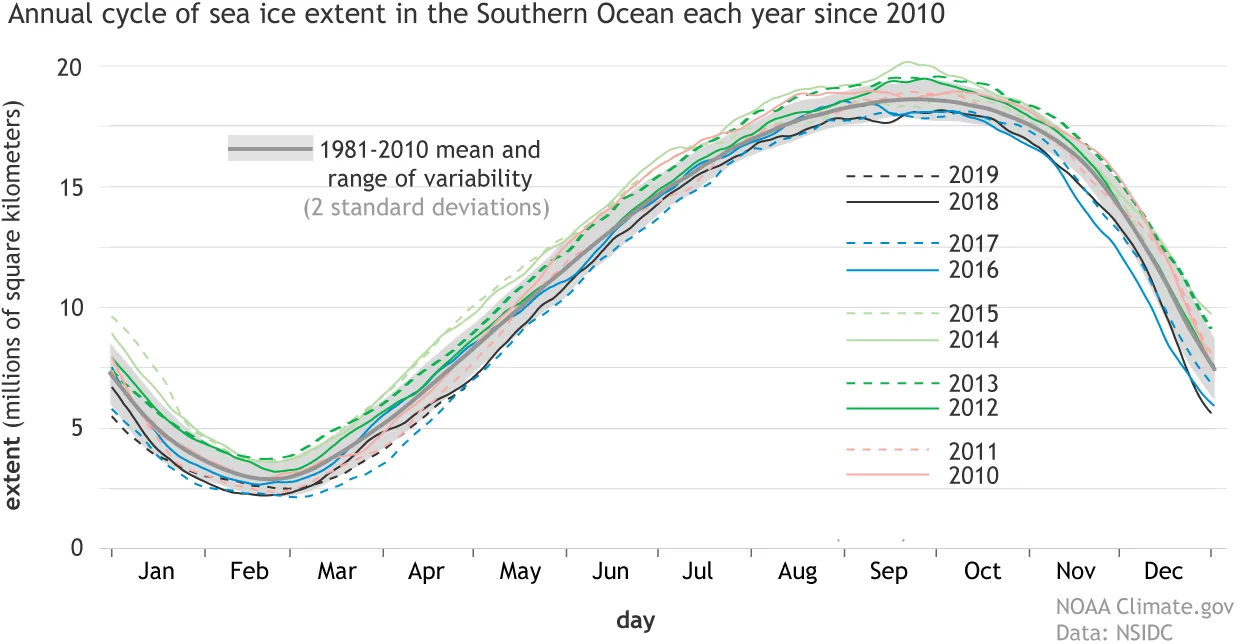
Graph 1. Annual cycle of sea ice. Over the past decade, Antarctic sea ice extents have shown great variability, with both record-high winter maximum extent and record-low ones.
Geoengineering methods have been proposed in the past as a way to reduce the impact greenhouse gases have on rising global temperatures, and thus ice melt.
Capturing carbon from the atmosphere and storing it in the ground or ocean reservoirs, or solar radiation management based on an Earth albedo increase, are among some of the more renowned methods proposed to artificially mitigate climate change.
Scientists from Princeton University and Beijing Normal University, have proposed tackling the ice melt problem in Antarctica locally rather than globally. Michael Wolovick, lead scientist of the project, and John Moore have suggested not trying to modify climate and its ingredients on a global scale, but rather act with a “locally targeted intervention aimed at specific high-leverage locations such as ice streams and outlet glaciers.”
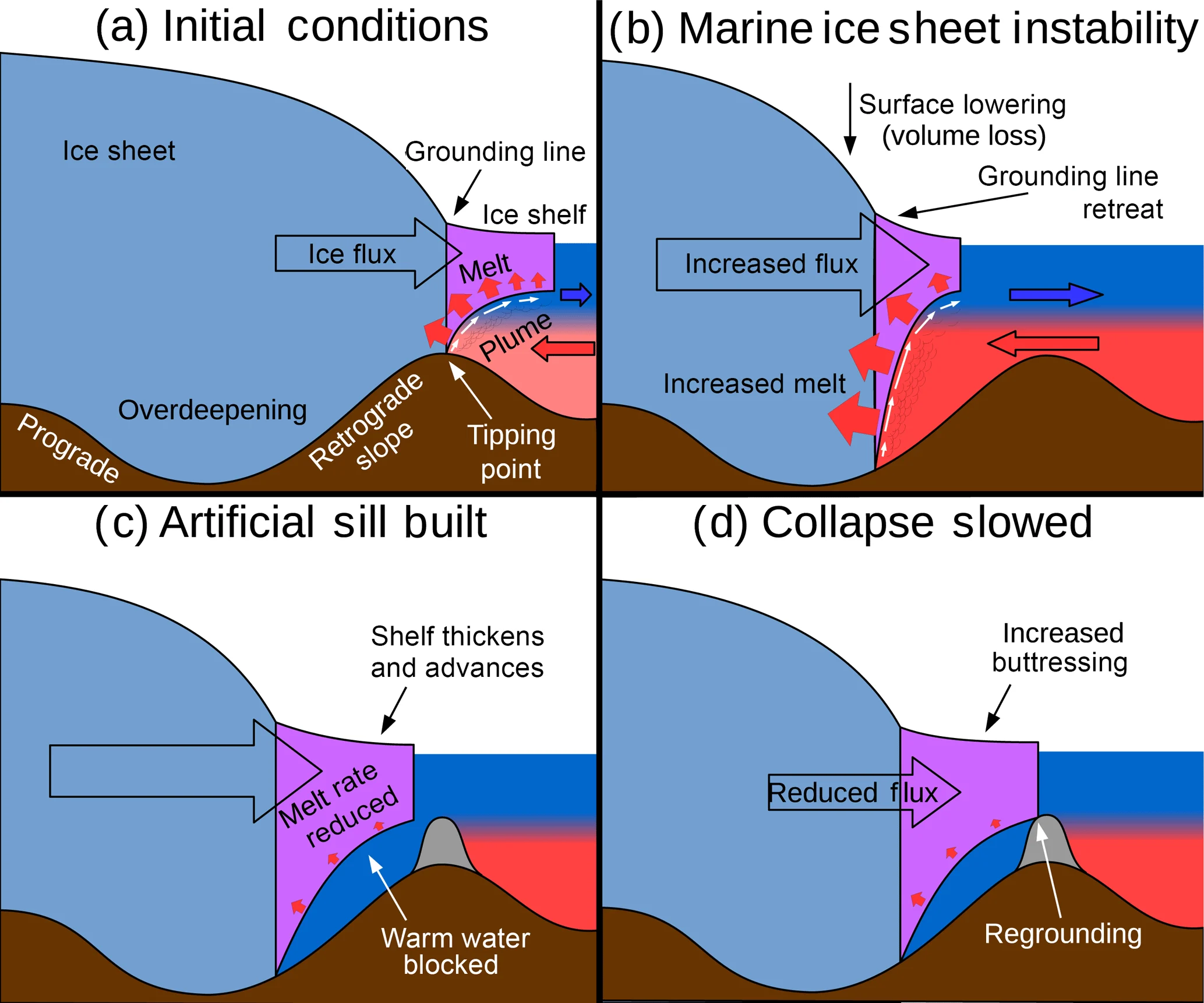
Figure 1. Artificial sill proposed by Wolovick and Moore to mitigate ice melt.
The proposed local intervention would help counteract what scientists refer to as Marine Ice Sheet Instability (MSI), a dynamic process that can cause an ice sheet to lift off the bedrock and collapse into the ocean. To mitigate the loss of ice, researchers propose using a continuous artificial sill made of bedrock and soil along the front of the glacier. The barrier would block warm water transport into the area while providing support should the ice shelf move.
The theory has been modeled using the Thwaites Glacier, which is one of the largest glaciers in Antarctica and responsible for up to 4 per cent of global ice melt. Wolovick and Moore believe this would be the most effective method to slow down ice melt along some of Antarctica’s major glaciers, however, they also admit it would be almost technically and politically impossible to carry out. While ice sheets impacts the global climate, they are controlled by various entities and governments and it is not entirely clear if geoengineering legally resides with each of these groups.

Image 1 sea ice off the Oates Coast of Antarctica on October 7, 2018 (left), and January 12, 2019 (right). Unlike the Arctic, where a significant amount of ice persists all year, the Antarctic holds on to very little sea ice in the summer. Source: Suomi NPP Satellite NOAA
This is not the first time the authors have provided geoengineering ideas to fight ice melt in Antarctica. In the past, they proposed more simplistic methods that were capable of reducing ice melt in the region up to 70 per cent. One of those projects, merely theoretical, suggested filling the ocean with pumps propelled with windmills, capable of freezing the surface waters to avoid the dreaded Marine Ice Sheet Instability.
While scientists continue their brainstorming in search of new geoengineering solutions, ice melt rates increase and sea levels rise. Putting them into practice may still seem like science fiction to many, but the current management of fossil fuel consumption could make geoengineering a reality sooner rather than later.
Source: The Cryosphere
Editing by Isabella O'Malley.








